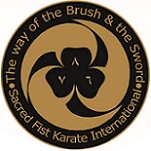|
The
Senegalese form traditionally allows blows with the hands (frappe), the only
of the West African traditions to do so. As a larger confederation and
championship around Lutte Traditionnelle has developed since the 1990s,
Senegalese fighters now practice both forms.
Transcending ethnic groups, the sport enjoys the status of national
sport.Traditionally, young men used to fight as a distraction, to court
wives, prove their manliness, and bring honor to their villages. Usually
each wrestler called M'burr in Wolof performed a particular dance before the
start of the combat.
In order to win a laamb match a practitioner must force his opponent's knee
or back to the ground.Successful fighters are notorius in their region and
young men often engage in these types of fights to prove themselves as men
and bring honour to their families, themselves and their village.
A fighter never enters the ring without the presence of his spiritual
leader, known as a 'marabout' or 'juju man'. It is believed they have the
power to exorcise evil demons and break spells that may have been cast on
the fighter by his opponent,
Today it is very popular in the country as an indication of male athletic
strength and ability. Presently, wrestling is arranged by business-promoters
who offer financial rewards for the winners. |













